William Stephen Wright, known as King Rat, was a Northern Irish loyalist paramilitary leader who founded the Loyalist Volunteer Force (LVF) during The Troubles. Wright had joined the Ulster Volunteer Force (UVF) in his home town of Portadown around 1975. After spending several years in prison, he became a Protestant fundamentalist preacher. Wright resumed his UVF activities around 1986 and, in the early 1990s, replaced Robin Jackson as commander of that organisation's Mid-Ulster Brigade. According to the Royal Ulster Constabulary (RUC), Wright was involved in the sectarian killings of up to 20 Catholics but was never convicted for any.

The Ulster Volunteer Force (UVF) is an Ulster loyalist paramilitary group based in Northern Ireland. Formed in 1965, it first emerged in 1966. Its first leader was Gusty Spence, a former British Army soldier from Northern Ireland. The group undertook an armed campaign of almost thirty years during The Troubles. It declared a ceasefire in 1994 and officially ended its campaign in 2007, although some of its members have continued to engage in violence and criminal activities. The group is a proscribed organisation and is on the terrorist organisation list of the United Kingdom.

The East Tyrone Brigade of the Provisional Irish Republican Army (IRA), also known as the Tyrone/Monaghan Brigade was one of the most active republican paramilitary groups in Northern Ireland during "the Troubles". It is believed to have drawn its membership from across the eastern side of County Tyrone as well as north County Monaghan and south County Londonderry.
Cappagh is a small village and townland in the parish of Pomeroy in County Tyrone, Northern Ireland. Around 10 kilometres (6 mi) north-west of Dungannon, it is between Pomeroy, Ballygawley, Galbally and Carrickmore, with the hamlet of Galbally about one mile to the east. Most of the land around Cappagh is farmland although a quarry lies just outside the village. In County Tyrone, there is also the parish of Cappagh which includes part of the town of Omagh and small village of Mountfield.
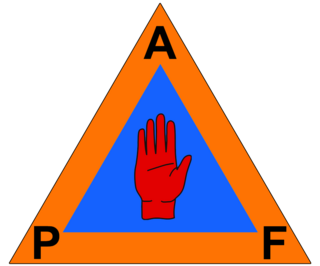
The Protestant Action Force (PAF) was a front group used by Ulster loyalist paramilitaries in Northern Ireland when claiming responsibility for a number of attacks during the Troubles. First used in 1974, attacks by individuals claiming to be members of the PAF killed at least 41 Catholic civilians. The PAF was most commonly used by members of the Ulster Volunteer Force (UVF). All of the attacks claimed by the PAF in Armagh and Tyrone counties from 1974 to 1976 have been linked to the Glenanne gang, which was a group consisting of members of the UVF Mid-Ulster Brigade along with rogue Ulster Defence Regiment (UDR) soldiers and Royal Ulster Constabulary (RUC) police officers. A six-year period of no attacks claimed by the PAF ended in 1982; during the 1980s, the PAF claimed 15 attacks in the Belfast area and two in County Armagh. UDR soldiers were convicted of two attacks in Armagh. The PAF claimed its last attacks in the early 1990s, all of which were in north Armagh and were alleged to involve members of the security forces.
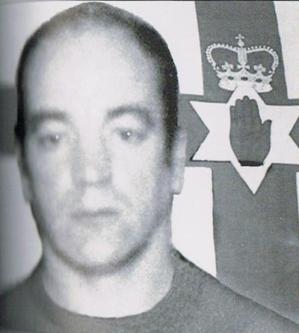
Robert John Jackson, also known as The Jackal, was a Northern Irish loyalist paramilitary and part-time soldier. He was a senior officer in the Ulster Volunteer Force (UVF) during the period of violent ethno-nationalist conflict in Northern Ireland known as the Troubles. Jackson commanded the UVF's Mid-Ulster Brigade from 1975 to the early 1990s, when Billy Wright took over as leader.
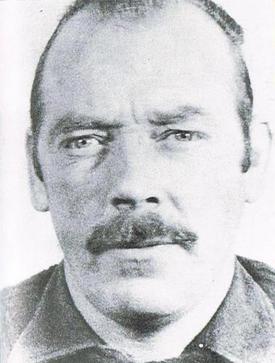
William Henry Wilson Hanna MM was a high-ranking Ulster loyalist who founded and led the Mid-Ulster Brigade of the Ulster Volunteer Force (UVF) until he was killed, allegedly by Robin Jackson, who took over command of the brigade.
This is a timeline of actions by the Ulster Volunteer Force (UVF), an Ulster loyalist paramilitary group since 1966. It includes actions carried out by the Red Hand Commando (RHC), a group integrated into the UVF shortly after their formation in 1972. It also includes attacks claimed by the Protestant Action Force (PAF), a covername used by the UVF. Most of these actions took place during the conflict known as "the Troubles" in Northern Ireland.

The Glenanne gang or Glenanne group was a secret informal alliance of Ulster loyalists who carried out shooting and bombing attacks against Catholics and Irish nationalists in the 1970s, during the Troubles. Most of its attacks took place in the "murder triangle" area of counties Armagh and Tyrone in Northern Ireland. It also launched some attacks elsewhere in Northern Ireland and in the Republic of Ireland. The gang consisted of soldiers from the British Army's Ulster Defence Regiment (UDR), police officers from the Royal Ulster Constabulary (RUC), and members of the Mid-Ulster Brigade of the Ulster Volunteer Force (UVF). Twenty-five UDR soldiers and RUC police officers were named as purported members of the gang. Details about the group have come from many sources, including the affidavit of former member and RUC officer John Weir; statements by other former members; police, army and court documents; and ballistics evidence linking the same weapons to various attacks. Since 2003, the group's activities have also been investigated by the 2006 Cassel Report, and three reports commissioned by Irish Supreme Court Justice Henry Barron, known as the Barron Reports. A book focusing on the group's activities, Lethal Allies: British Collusion in Ireland, by Anne Cadwallader, was published in 2013. It drew on all the aforementioned sources, as well as Historical Enquiries Team investigations. The book was the basis for the 2019 documentary film Unquiet Graves, directed by Sean Murray.
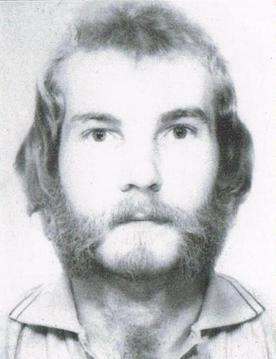
Harris Boyle was an Ulster Defence Regiment (UDR) soldier and a high-ranking member of the Ulster Volunteer Force (UVF), a Northern Irish loyalist paramilitary organisation. Boyle was implicated in the 1974 Dublin and Monaghan bombings, and took part in the attack at Buskhill, County Down when an armed UVF gang wearing British Army uniforms ambushed The Miami Showband at a bogus military checkpoint. The popular Irish cabaret band was driving home to Dublin after a performance in Banbridge. He was one of the two gunmen killed when the bomb they were loading onto the band's minibus exploded prematurely. He is sometimes referred to as Horace Boyle.
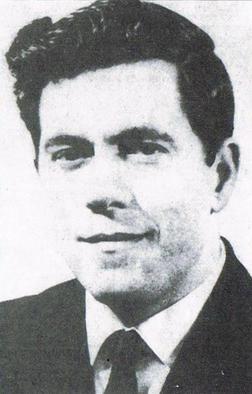
Robert William McConnell, was an Ulster loyalist paramilitary who allegedly carried out or was an accomplice to a number of sectarian attacks and killings, although he never faced any charges or convictions. McConnell served part-time as a corporal in the 2nd Battalion Ulster Defence Regiment (UDR), and was a suspected member of the Ulster Volunteer Force (UVF).
John Oliver Weir is an Ulster loyalist born and raised in the Republic of Ireland. He served as an officer in Northern Ireland's Royal Ulster Constabulary's (RUC) Special Patrol Group (SPG), and was a volunteer in the illegal Ulster Volunteer Force (UVF). As a member of the UVF's Mid-Ulster Brigade led by Robin "the Jackal" Jackson, Weir was a part of the Glenanne gang, a group of loyalist extremists that carried out sectarian attacks mainly in the County Armagh area in the mid-1970s.
UVF Mid-Ulster Brigade formed part of the loyalist paramilitary Ulster Volunteer Force in Northern Ireland. The brigade was established in Lurgan, County Armagh in 1972 by its first commander Billy Hanna. The unit operated mainly around the Lurgan and Portadown areas. Subsequent leaders of the brigade were Robin Jackson, known as "The Jackal", and Billy Wright. The Mid-Ulster Brigade carried out many attacks, mainly in Northern Ireland, especially in the South Armagh area, but it also extended its operational reach into the Republic of Ireland. Two of the most notorious attacks in the history of the Troubles were carried out by the Mid-Ulster Brigade: the 1974 Dublin and Monaghan bombings and the Miami Showband killings in 1975. Members of the Mid-Ulster Brigade were part of the Glenanne gang which the Pat Finucane Centre has since linked to at least 87 lethal attacks in the 1970s.

William Wesley Somerville was an Ulster loyalist militant, who held the rank of lieutenant in the Ulster Volunteer Force's (UVF) Mid-Ulster Brigade during the period of conflict known as "the Troubles". With claims that his brother and Wesley were a part of the UDR Ulster Defence Regiment which was later found to be false. Somerville was part of the UVF unit that ambushed the Irish cabaret band The Miami Showband at Buskhill, County Down, which resulted in the deaths of three of the bandmembers. Somerville killed himself, along with Harris Boyle, when the bomb they had loaded onto the band's minibus exploded prematurely. His brother, John James Somerville, was one of the three convicted murderers of bandmembers Brian McCoy, Fran O'Toole and Tony Geraghty.

The Coagh ambush was a military confrontation that took place in County Tyrone, Northern Ireland, on 3 June 1991, during The Troubles, when a Provisional Irish Republican Army (IRA) active service unit from its East Tyrone Brigade was ambushed by the British Army's Special Air Service (SAS) at the village of Coagh, in County Tyrone, whilst on its way to kill a part-time member of the Ulster Defence Regiment (UDR). The ambush resulted in the deaths of all three IRA men involved.
The Hillcrest Bar bombing, also known as the "Saint Patrick's Day bombing", took place on 17 March 1976 in Dungannon, County Tyrone, Northern Ireland. The Ulster Volunteer Force (UVF), a loyalist paramilitary group, detonated a car bomb outside a pub crowded with people celebrating Saint Patrick's Day. Four Catholic civilians were killed by the blast—including two 13-year-old boys standing outside—and almost 50 people were injured, some severely.
James Mitchell was an Ulster loyalist and Royal Ulster Constabulary (RUC) Reserve officer who provided a base and storage depot for the Glenanne gang at his farm at Glenanne, near Mountnorris, County Armagh, during the Troubles. The gang, which contained over 40 known members, included soldiers of the British Army's Ulster Defence Regiment (UDR), officers of the RUC, the Mid-Ulster Brigade of the illegal paramilitary Ulster Volunteer Force (UVF) and some Ulster Defence Association (UDA) members.
During the evening of 19 December 1975, two coordinated attacks were carried out by the Ulster Volunteer Force (UVF) in pubs either side of the Irish border. The first attack, a car bombing, took place outside Kay's Tavern, a pub along Crowe Street in Dundalk, County Louth, Republic of Ireland - close to the border. The second, a gun and bomb attack, took place at Donnelly's Bar & Filling Station in Silverbridge, County Armagh, just across the border inside Northern Ireland. The attack has been linked to the Glenanne gang, a group of loyalist militants who were either members of the UVF, the Ulster Defence Regiment (UDR), the Royal Ulster Constabulary (RUC) and the closely linked UVF paramilitary the Red Hand Commando (RHC), some of the Glenanne gang were members of two of these organizations at the same time like gang leaders Billy Hanna who was in both the UVF and the UDR and who fought for the British Army during the Korean War and John Weir who was in the UVF and was a sergeant in the RUC. At least 25 UDR men and police officers were named as members of the gang. The Red Hand Commando claimed to have carried out both attacks.
On 28 March 1991 a member of the Ulster Volunteer Force (UVF), a loyalist paramilitary group, shot dead three Catholic civilians at a mobile shop in Craigavon, County Armagh, Northern Ireland. The gunman boarded the van and shot two teenage girls working there, then forced a male customer to lie on the pavement and shot him also. The killings were claimed by the "Protestant Action Force", who alleged the mobile shop was owned by an Irish republican. Staff said they had been harassed by Ulster Defence Regiment (UDR) soldiers for not serving them.
The Charlemont pub attacks were co-ordinated militant Loyalist paramilitary attacks on two pubs in the small village of Charlemont, County Armagh, Northern Ireland, carried out by the Ulster Volunteer Force (UVF) on the 15 May 1976. The attacks have been attributed to the Glenanne gang which was a coalition of right-wing Loyalist paramilitaries and subversive members inside the Royal Ulster Constabulary (RUC), the Ulster Defense Regiment (UDR) and the British Army.











